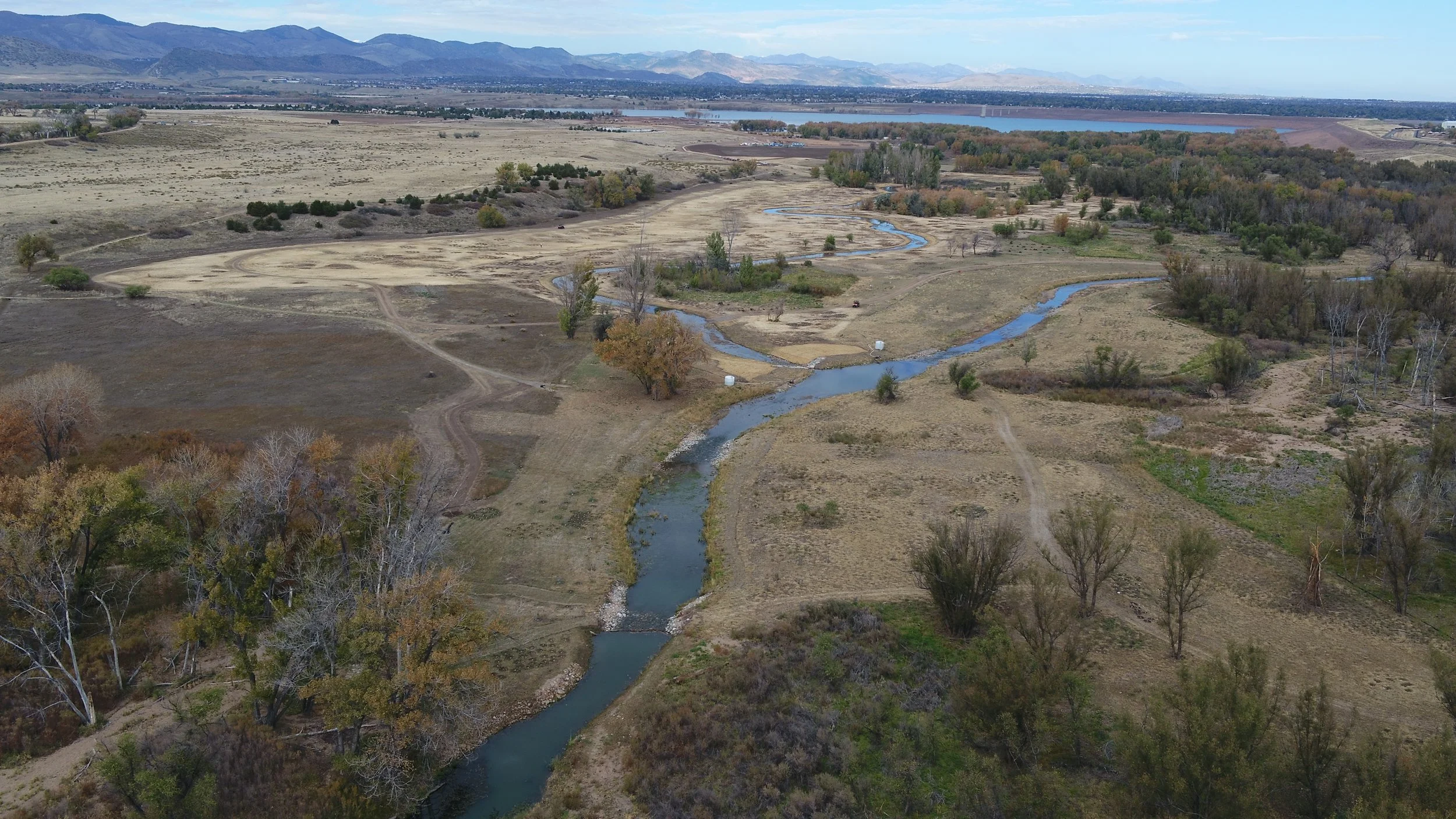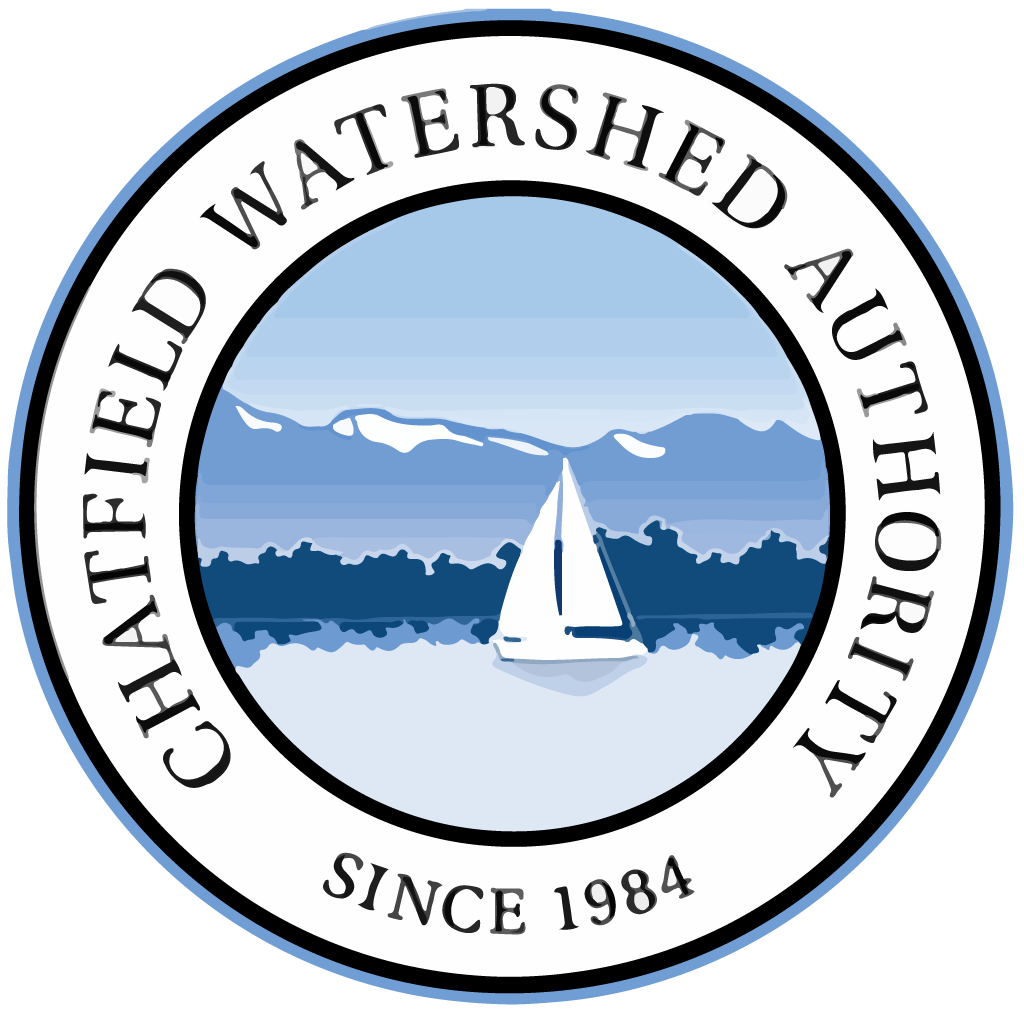
Watershed FAQs
What is a Watershed?
A watershed is simply the land area that drains to one stream, lake or river, ranging from transient rivulets to rivers like the Platte or Missouri as they wind toward the mighty Mississippi. In essence the “Mississippi River watershed” comprises roughly the central one-third of the nation, stretching from points near Calgary and Pittsburgh all the way south into the New Orleans delta and Gulf of Mexico. The larger watershed consists of hundreds and thousands of smaller tributaries, such as the Platte, Yellowstone, Wabash, Missouri and Ohio Rivers. Closer to home, the Platte watershed supplies the North and South Forks of the Platte itself as well as Clear Creek, the Big Thompson, Kiowa and Cache La Poudre Rivers, all the way north to the Laramie and Elk Horn Rivers in Wyoming and Nebraska (among many more), and eventually into the mighty Mississippi itself. The Chatfield Watershed spreads northeast from the headwaters of the South Platte system.
Why Do Watersheds Need to Be Protected?
The condition of a watershed directly affects the water bodies it encompasses. Like the bodies of water themselves (lakes, rivers, streams etc.), individual watersheds share similarities, yet they differ in many ways. Every inch of the United States is part of a watershed — all land drains into a lake, river, stream or other water body, defining the quality of its water. We all live on the land, in a watershed, and the condition of that watershed is critical to our daily lives and to our continuing well-being because all plant and animal life requires water to survive. Preserving the health and vibrancy of the Chatfield Watershed is critical to our communities — a resource for clean drinking water, productive fisheries, plant life and outdoor recreation — sustaining our economies, environment and quality of life.
Ten Simple Things You Can Do To Prevent Pollution
Each day, we make countless choices that may either invigorate or potentially poison community water supplies. Here are a few simple things you can do to make a positive impact on public watersheds:
Use the only the minimum amount of fertilizers and pesticides needed to nourish your lawn or garden. Read label directions carefully! Do not apply pesticides or fertilizers to your lawn or garden before or during rainfall.
Consider planting native plant species in your yard. Natives use less water and require less fertilizer and pesticide (perhaps none at all!).
Prevent soil erosion by establishing plants on bare areas of your property.
Keep lawn clippings, leaves and other yard waste out of storm drains and gutters. Compost yard and kitchen wastes and leave lawn clippings on your lawn.
Pick up pet waste.
If caring for livestock on your property, manage animal waste to minimize mixing with stormwater runoff.
Ensure proper disposal of household chemicals and automotive products such as paints, cleaners, oil, and antifreeze. Contact your local government to determine whether a hazardous household waste-collection program exists in your community. Select less-toxic or nontoxic household cleaners when possible.
Clean up spilled gasoline, oil, antifreeze and brake fluids. Never allow used oil or other chemicals to spill into storm drains and street gutters — these outlets flow directly to our streams, rivers and lakes!
Wash your car at a car wash. Washing your car on the driveway allows soap, dirt and trace chemicals to leach into the soil or wash into nearby storm drains.
What is “Point-Source“ pollution?
Pollution from a “point source” are discharges that can be traced to a specific spot. For example, a water drainpipe leading out of a building and discharging waste into a river or lake is an example of point-source pollution.
What is “Nonpoint-Source” (Runoff) pollution?
Nonpoint-source pollution is a technical term for the flow of contaminants from an unknown source. This so-called “runoff pollution” occurs when rainfall, snowmelt or excess irrigation flows over land or through the soil, picking up pollutants and depositing them into storm drains or directly into streams, lakes, ponds and rivers. Nonpoint source pollution is one of the leading causes of water quality problems. Among other things, it results from residents who use excessive fertilizers, herbicides and insecticides. Other hard-to-track sources include gasoline, oil, grease, toxic chemicals, dog feces, lawn clippings, leaves and other yard wastes.
What is the difference between point and nonpoint source pollution?
Point-source pollution has a single, identifiable source. Nonpoint -source pollution may be a collection of pollutants from many different sources, not all of which are readily identifiable, or from a single unidentified source. A wastewater treatment plant is an example of a point source; because it can be readily identified, and dealing with resulting pollution issues is made a little easier. Conversely, nonpoint-source pollution is more difficult to address, and it is a common and significant problem in water management.
What is nutrient pollution?
Excess nutrients (mainly nitrogen and phosphorus) added to bodies of water can act as fertilizer, causing excessive growth of algae. Aside from the aesthetics of unwanted algae proliferation, nutrient pollution often leads to more serious problems — including oxygen depletion. Algal overgrowth blocks the light necessary for plants and grasses to grow in the aquatic habitat, leading to decay when the algae and surrounding green matter die. The process of decay, in turn, depletes the oxygen dissolved in the water — a serious potential danger to fish and other aquatic animals.
What is stormwater?
Stormwater is the same thing as rainwater. That water flows across the land and either soaks into the ground or runs into storm drains and waterways.
Where does stormwater go after it drains into a storm drain?
In the Chatfield Watershed, runoff entering storm drains traverses underground pipes directly into local creeks, often carrying pollutants with it. Many people mistakenly believe these storm drains funnel water into the sewer or wastewater treatment system. However, stormwater — untreated and unfiltered — is a major contributor to pollution in our creeks.
What are some common types of stormwater pollution?
Litter, garden fertilizers and pesticides, vehicle fluids from driveway and street spills, hazardous chemicals or septic waste entering storm drains, and pet waste left on the ground.
What is a TMDL?
A TMDL — total maximum daily load — is a calculation of the maximum amount of a pollutant that a waterbody can receive and still meet Colorado’s water-quality standards. In other words, it is the sum of the allowable loads of a single pollutant from all contributing point and nonpoint sources. This calculation includes a margin of safety and is adjusted to account for seasonal variations. In addition, a TMDL defines the reductions needed to meet water quality standards and allocates those reductions among appropriate sources in the watershed.
